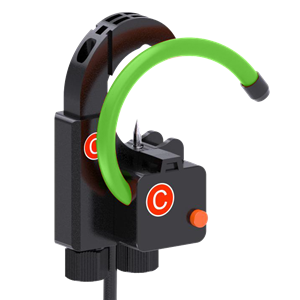-
1706-2023
250 uΩ meter shunt
In the power measurement field, the meter shunt is one of the most commonly used applications for the 250 uΩ fuse resistor. In this case, the fuse resistor is placed in the circuit so that the fuse lead of the current divider can be directly connected to the circuit, making it easy for the current divider to read the current data in the circuit. In addition, in some cases where high-precision current measurement is required, the fuse resistor can also be used to protect fragile ammeters by isolating the high-voltage part from the low-voltage part, thereby reducing the noise and interference in the circuit.
-
1107-2023
Professional products, quality assurance, OSWELL present at exhibitions in Mexico and Brazil
OSWELL will present at the INA PAACE Automechanika in Mexico and the FIEE in Brazil in July.
-
2206-2023
How to package and ship our shunt products
Quality control is an important part of our packaging and shipping process. We carefully check each shunt product before packaging to ensure that it meets our strict quality standards. During shipping, we track each shipment and provide regular updates to our customers regarding the status and expected delivery date.
-
2006-2023
How shunts are produced
Shunts are typically made from materials with low resistance, high conductivity, and good stability over time. The most common material used for shunts is manganese-copper (MnCu) alloy, but other materials such as nickel-chromium (NiCr) and copper-nickel (CuNi) alloys are also used depending on the requirements of the application.
-
1906-2023
what is shunt?
Shunts are a type of resistor that is specifically designed to measure current. They work by creating a voltage drop across the resistor as a result of the current flowing through it. By measuring this voltage drop, we can calculate the current passing through the shunt using Ohm's law (I=V/R).
-
2104-2023
A measurement method for parallel resistance of solar cells
A measurement method for parallel resistance of solar cells 1. The larger the series resistance is, the more the short circuit current drops, and the more the filling factor will accordingly; The smaller the shunt resistance, the greater the current, the more the open circuit voltage drops, and the more the fill factor drops.
-
1904-2023
How to calculate the multiple of the ammeter after using the shunt
Motor test measurements usually require ammeters to be equipped with multiple shunt units to solve the problem of ensuring the desired measurement accuracy over a larger measurement range. At this point, the rated voltage drop of all shunt used must match that of the ammeter (e.g. 75 mV).
-
0504-2023
Current transformer and rogowski coil
-
2109-2022
How to calculate multiple of ammeter after using shunt
Motor test measurements often require ammeters to be equipped with multiple shunts to solve the problem of ensuring the required measurement accuracy over a larger measurement range.
-
2009-2022
Three key parameters of the shunt
The shunt used in the power battery PACK is essentially a resistor to detect the current value flowing. Since the current value is not easy to monitor, most of them are converted into voltage at present, that is, when the current passes, the resistor generates a voltage drop, and the voltage value is detected to calculate the passed current value, which is based on U=IR.




